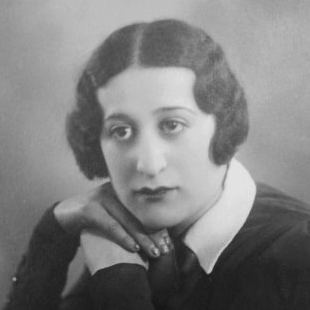
News

Hatbox from Kovno tells family history
JORDAN MOSHE
Although all these items remain with her family until today, it is the hatbox that best captures her endurance. It is also this hatbox that is what Doreen – who passed away in 1998 – is remembered for by her children and grandchildren.
Doreen’s unique legacy has now not only been preserved, but is part of a campaign to collect and display artifacts connected to ORT at the ORT SA Academy in Johannesburg.
This is because Doreen trained to become a milliner at her local ORT centre in Kovno (Lithuania) when she was 18, creating the hats which will go on display with the hatbox.
Her daughter-in-law, Ruth Fait, a history teacher by profession, was determined to record her mother-in-law’s story from the moment she heard it. “The hats and their story have been part of our lives for decades,” Ruth says. “We knew that she had been a milliner, but she never made hats for anyone after arriving in South Africa.
“These hats took her back to a past that was painful to remember, and because she wanted to forget Lithuania, she left her trade behind as well.”
Doreen was born in 1914 in Shavel, Lithuania, and her early years were marked by hardship and loss. Her father, Samuel, left for South Africa before her birth to seek out a better life for his family, but Doreen lost both her sister and mother to typhus when she was just 11.
Doreen was raised by her mother’s sister, Rocha, and Rocha’s husband, Feivel Rosenfeld, who in 1933 planned to leave for Cuba to escape Nazi persecution.
“My mother-in-law was by then earning a living as a milliner, having been sent to ORT by her uncle when she was 18,” says Ruth. Her uncle suggested that she contact her estranged father and ask to join him in South Africa.
Although she had never seen him, he sent her a ticket, and she arrived here in 1934.” Doreen soon met and married fellow Shavel resident Charles Fait, who was 13 years older than her, and had been living in South Africa since 1926.
Both lost all the relatives they had in Europe to the Holocaust, but went on to have three children of their own – Faye, Norman, and Ruth’s husband, Abram.
Living in the southern suburbs of Johannesburg, the couple ran their own kosher delicatessen in Cyrildene. Doreen cooked the supplies herself.
Although she no longer practised as a milliner, Doreen’s collection of hats became part of the lives of her children and grandchildren. “We were always using them,” says Ruth. “They came out for fancy dress parties or even to be used with Purim costumes. Although she wanted to forget the past, the hats became part of her family’s life.”
Ruth received the box in 1984 when Doreen moved out of her house in Berea, and after recording her mother-in-law’s story in detail, she kept the box in her home where her grandchildren could become acquainted with its contents and story.
It is for this reason that Gina, Ruth’s granddaughter, chose to use the collection as the subject of her Roots school project earlier this year, and showcase her great-grandmother’s legacy.
Ruth gave her all the information she required, sharing what she’d gleaned from her mother-in-law before she passed away at 84 in 1999.
“I’d asked her all about herself and where she came from,” says Ruth. “I was the only one who really pushed her to tell me about her life before coming to South Africa. When Gina told me that she wanted to use it for her project, I took the hats out of storage, and we combined it with photos to create a special project.”
The project is called “Brimming with Pride: A Milliner’s Story”, and includes the hat box, which has been encased in pewter and enhanced with photographs of Doreen. Among them is one featuring her crafting a hat at the ORT centre in Kovno, which is why Ruth made the decision to hand the hat box over to ORT Johannesburg for display.
“My father, Morris Seeff, was very involved in ORT,” she explains. “Our whole family knew a lot about ORT, and the work it does. When we moved from Savoy to Oaklands in 2017, I decided to thin out the collection of stuff I’d accumulated over the years, and chose to take the box and hats to ORT. These hats have come a very long way, and ORT is part of their story.”
Gina’s project was also given to ORT, and is the first in what the centre hopes will eventually be a collection of items related to the organisation’s history.
Ruth believes that her mother-in-law would be surprised and proud to know that her humble hatbox and its contents are so greatly treasured. Ruth looks forward to seeing it go on display at the centre.
“My mother-in-law was a tremendous woman,” she concludes. “Until she died, she was always immaculate, and could always be found reading. Her story is one of endurance and triumph despite pain and loss. She made the most of a bad lot. Her legacy shows us just how well she succeeded.”




